Article
For nearly 2 weeks now I've heard more than a few people complain that the resistance war in Alaska was lost for a variety of reasons: that the server began to crash, or that there was a DDoS aimed at the server that selectively or disproportionately affected the anti-VVV forces at the very end of the battle. Of course, we can only argue opinion unless we actually look at the numbers, and hopefully the numbers speak for themselves. I do not think that there is any debate that the server rolled over and was dead AFTER the battle had concluded, the question is if there was any discernable affect before the end of the battle, and more importantly, if there was a discernible difference in impact between VVV and anti-VVV forces.
I must say beforehand that even with the numbers I will be presenting here, it will be difficult (if not impossible) to convince everyone. Part of the problem is that some people may propose arguments like: "Yes, that shows that we did damage, but if it wasn't for X, we would have done more!" and honestly, I doubt anyone has (or even could have) data to back that up either way. I do hope, however, that the numbers will illustrate one of 2 extremes: either there will be a noticeable difference between the two sides at T-10 or thereabouts (giving credence to claims that the battle was not fair or even), or there will not be a noticeable difference which would of course indicate that nothing was amiss (aside from, perhaps, the server beginning to die).
I must also thank and give credit to
Unless of course I make a mistake, in which case I apologize in advance. So without further ado, here is a screenshot of said data (click on images to enlarge!):

Much of what I will be looking at here will be based on the number of Attacker and Defender hits and not damage.
First, let's look at the hits for the USA and allies across the entire battle (the attackers):

And now for VVV and allies (the defenders):

We can start to see that VVV activity spiked severely within T-5. Here is the last T-20 with both sides together:

The 20m+ that VVV put down at T-3 broke the wall and reversed the damage gap at the last minute.
Here is the damage done over the same period of time (edit: I forgot to swap the sets so that this time VVV is in blue and the US in orange):

It's apparent that after T-3 that damage for both sides dropped. So, exactly what conclusions can we draw from this? I would argue that the server didn't go down completely prior to the conclusion of the battle, but it IS possible that both sides were affected by a steady degradation until the server crashed afterwards. This would explain why some people said that they were unable to hit before the close of the battle while other were able to - but clearly, damage dipped for both sides and there were still people hitting up until the very end.
What I consider possible is that the sudden influx of VVV within T-5 (and especially all of the hits at T-3!) may have sent the server spiraling out of control. We cannot say that the server was down completely however as people were still hitting, and it is clear that both attacker and defender saw their damage output drop precipitously within the last 2 minutes. I would say that no, it wasn't a DDoS (as has been said before), rather if anything it was a literal deluge of activity that most likely lead to an eventual overload with some people being affected before others. Many nations, in particular South Korea, do like to jump in without warning at T-3 or T-2 to flip battles, which isn't always something servers can easily handle. And when you look at the spike in activity from both sides, such as the damage measured in the graph below, it's easy to see how a last minute push could affect server stability.

If you still think it was some sort of VVV conspiracy, then I don't know what to tell you other than it's Friday night, and I'm going out. Have a good night Secura!

Previous article:
Some food for thought (12 years ago)
Next article:
Dear eUSA: get PTO'ed, please (12 years ago)
About the game:

USA as a world power? In E-Sim it is possible!
In E-Sim we have a huge, living world, which is a mirror copy of the Earth. Well, maybe not completely mirrored, because the balance of power in this virtual world looks a bit different than in real life. In E-Sim, USA does not have to be a world superpower, It can be efficiently managed as a much smaller country that has entrepreneurial citizens that support it's foundation. Everything depends on the players themselves and how they decide to shape the political map of the game.
Work for the good of your country and see it rise to an empire.
Activities in this game are divided into several modules. First is the economy as a citizen in a country of your choice you must work to earn money, which you will get to spend for example, on food or purchase of weapons which are critical for your progress as a fighter. You will work in either private companies which are owned by players or government companies which are owned by the state. After progressing in the game you will finally get the opportunity to set up your own business and hire other players. If it prospers, we can even change it into a joint-stock company and enter the stock market and get even more money in this way.
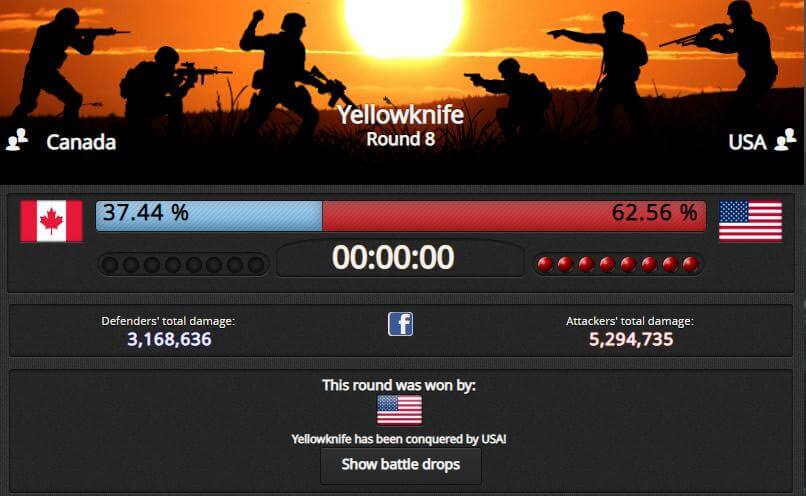
In E-Sim, international wars are nothing out of the ordinary.
Become an influential politician.
The second module is a politics. Just like in real life politics in E-Sim are an extremely powerful tool that can be used for your own purposes. From time to time there are elections in the game in which you will not only vote, but also have the ability to run for the head of the party you're in. You can also apply for congress, where once elected you will be given the right to vote on laws proposed by your fellow congress members or your president and propose laws yourself. Voting on laws is important for your country as it can shape the lives of those around you. You can also try to become the head of a given party, and even take part in presidential elections and decide on the shape of the foreign policy of a given state (for example, who to declare war on). Career in politics is obviously not easy and in order to succeed in it, you have to have a good plan and compete for the votes of voters.
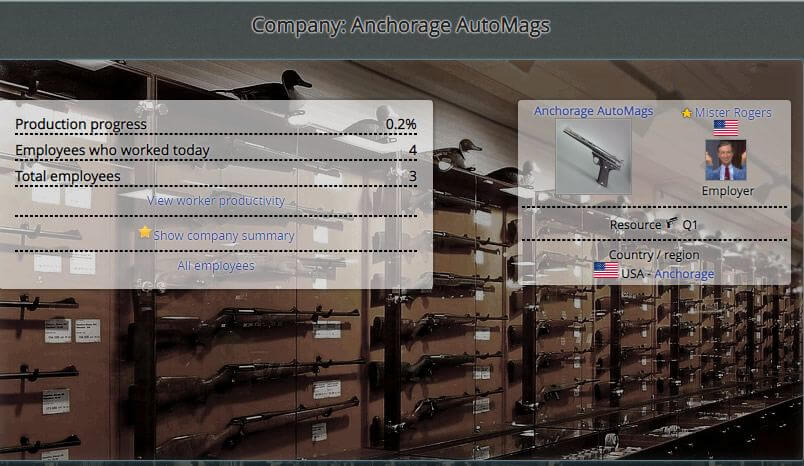
You can go bankrupt or become a rich man while playing the stock market.
The international war.
The last and probably the most important module is military. In E-Sim, countries are constantly fighting each other for control over territories which in return grant them access to more valuable raw materials. For this purpose, they form alliances, they fight international wars, but they also have to deal with, for example, uprisings in conquered countries or civil wars, which may explode on their territory. You can also take part in these clashes, although you are also given the opportunity to lead a life as a pacifist who focuses on other activities in the game (for example, running a successful newspaper or selling products).
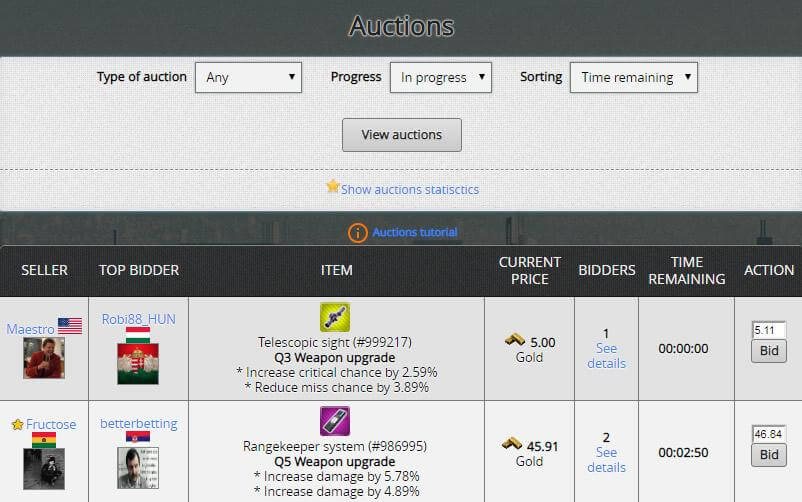
At the auction you can sell or buy your dream inventory.
E-Sim is a unique browser game. It's creators ensured realistic representation of the mechanisms present in the real world and gave all power to the players who shape the image of the virtual Earth according to their own. So come and join them and help your country achieve its full potential.
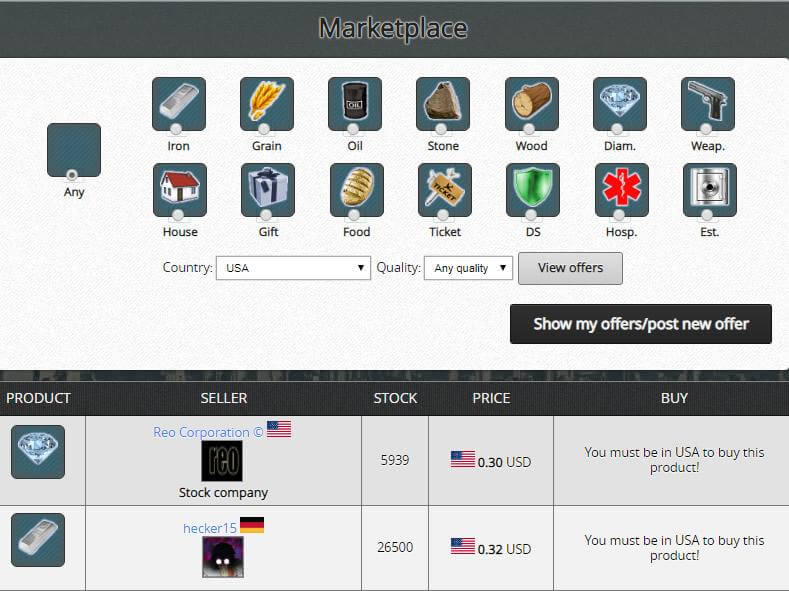
Invest, produce and sell - be an entrepreneur in E-Sim.
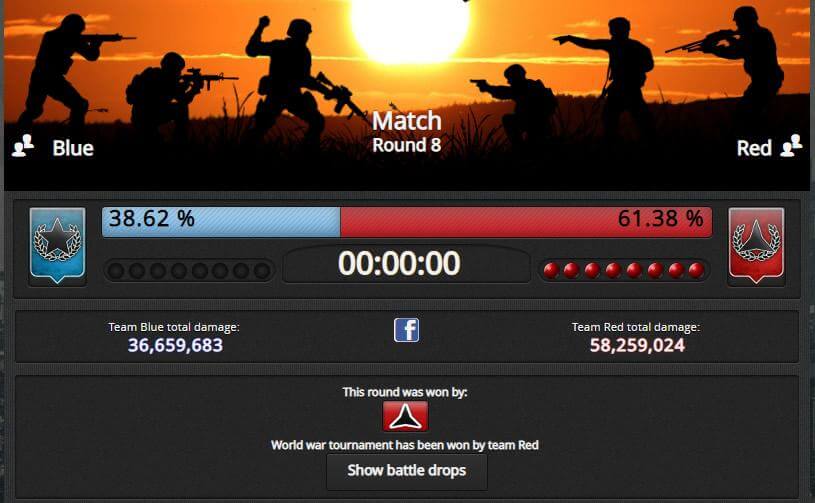
Take part in numerous events for the E-Sim community.

